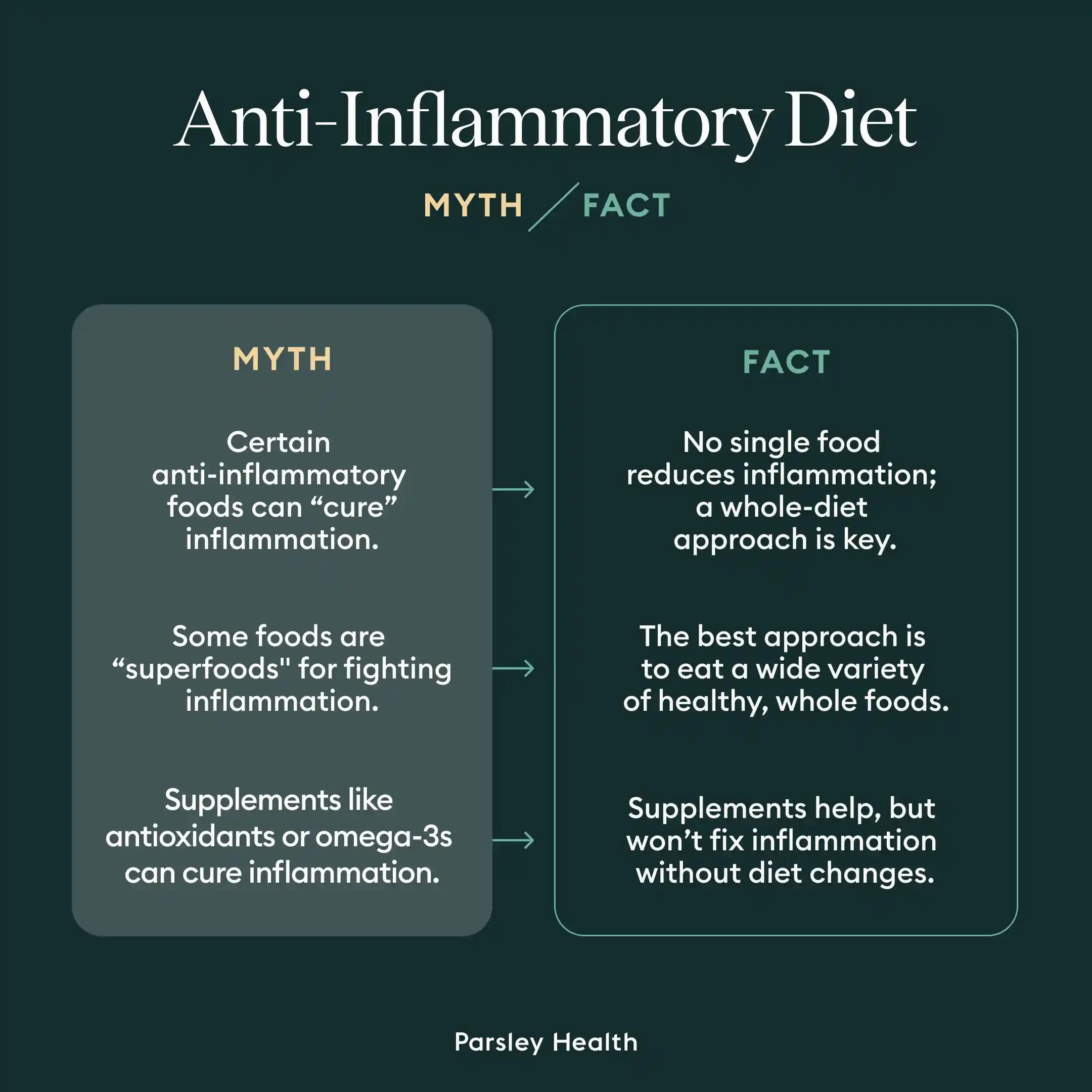Key takeaway: Inflammation is a key indicator of overall health and is heavily influenced by what you eat. Anti-inflammatory foods, like avocados, almonds, oily fish, and spinach, are excellent additions to your plate and can help combat a variety of symptoms.
Your health journey is personal, and there are very few recommendations a clinician would give to everyone. One of those rare recommendations for all humans aiming to be healthier? Eat more anti-inflammatory foods. Inflammation increases your risk of chronic conditions—from allergies to heart disease. And what you eat influences your body’s inflammation levels: Ultra-processed foods increase inflammation, while many whole foods decrease it. Here are the top 20 anti-inflammatory foods to add to your grocery list.
These 20 foods can help lower your levels of inflammation, prevent various chronic conditions, and combat symptoms of any current inflammatory conditions. An anti-inflammatory diet can boost your overall energy levels and help you feel your best.

How anti-inflammatory foods work
Before diving into the best anti-inflammatory foods, let’s take a step back: What even is inflammation? “When you get injured, sick, or your body detects something harmful, it triggers inflammation to help heal the damage,” explains Sean Ormond, MD, a dual board-certified anesthesiologist and pain management specialist, “When inflammation stays turned on too long, it becomes chronic, and that’s where the problem lies.” Chronic inflammation is the root of many chronic conditions, including diabetes, heart disease, and arthritis.
Chronic inflammation doesn’t have a quick fix. Instead, many lifestyle habits contribute to your inflammation levels, including the food on your plate. “Anti-inflammatory foods help to either reduce existing inflammation or prevent it from occurring in the body,” says Maria Emerick, MS, RDN, LD.
These foods contain specific nutrients, with the most common being antioxidants and other polyphenols, sources of fiber, certain vitamins, and omega-3 fatty acids.








